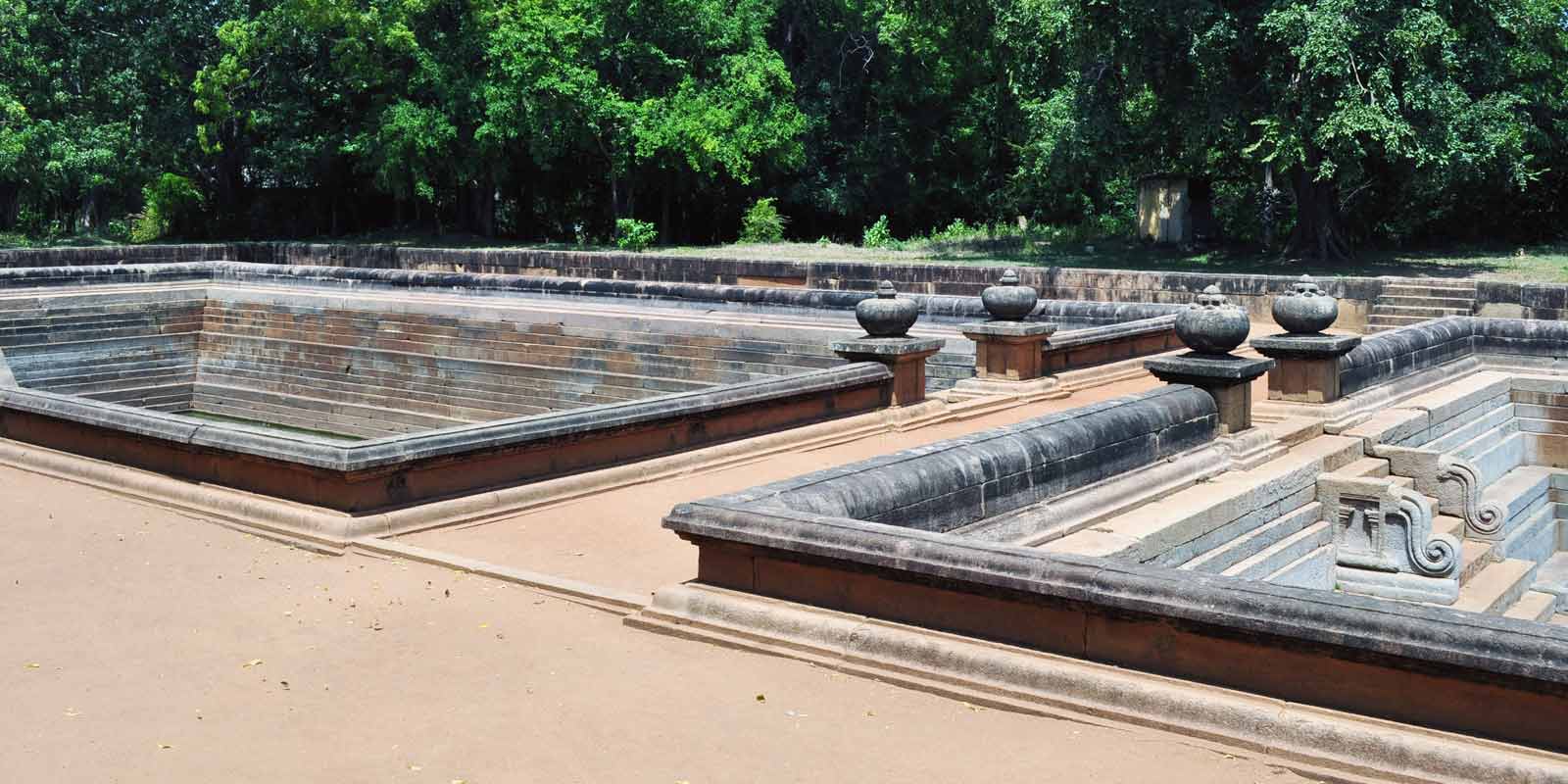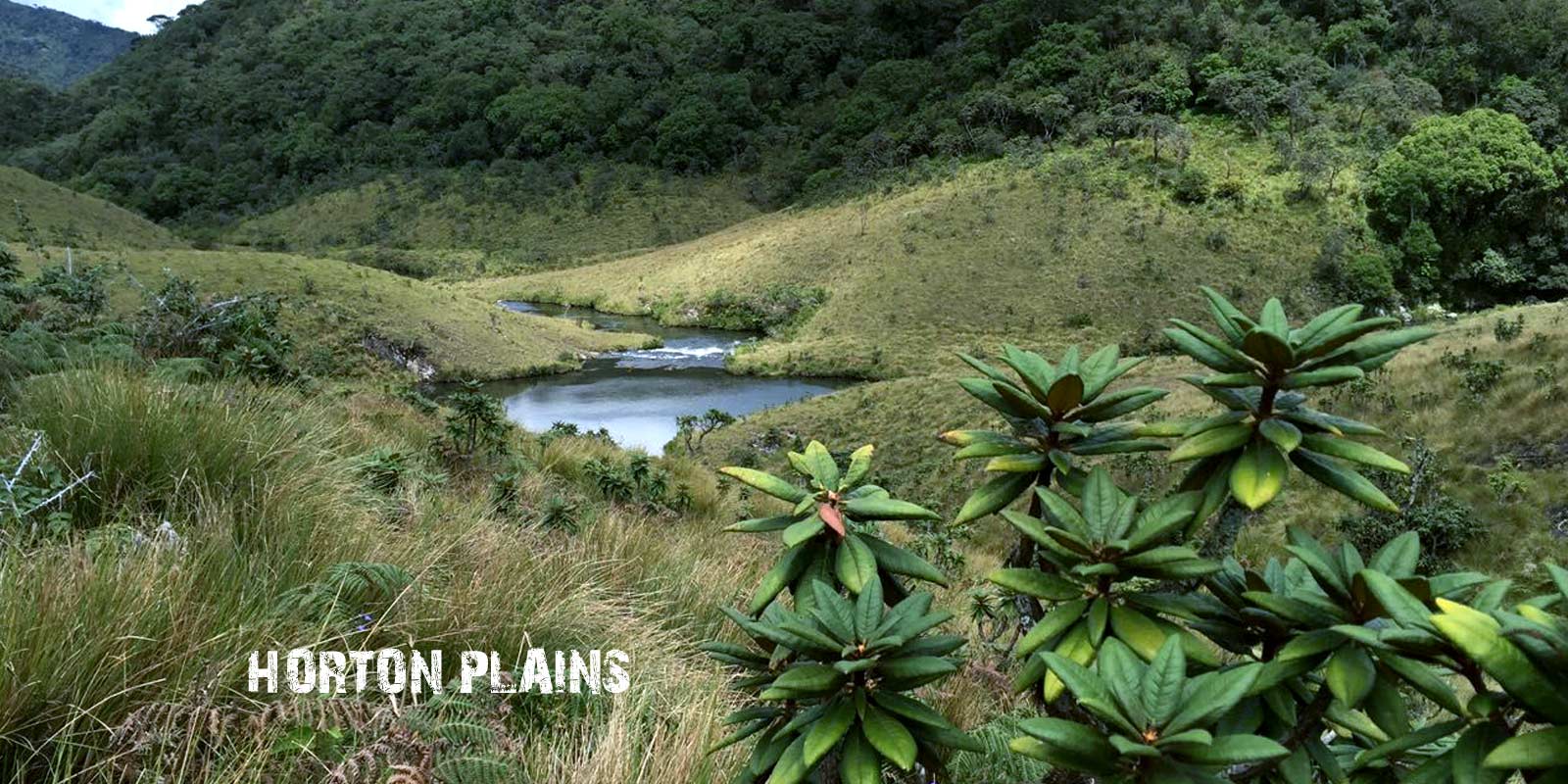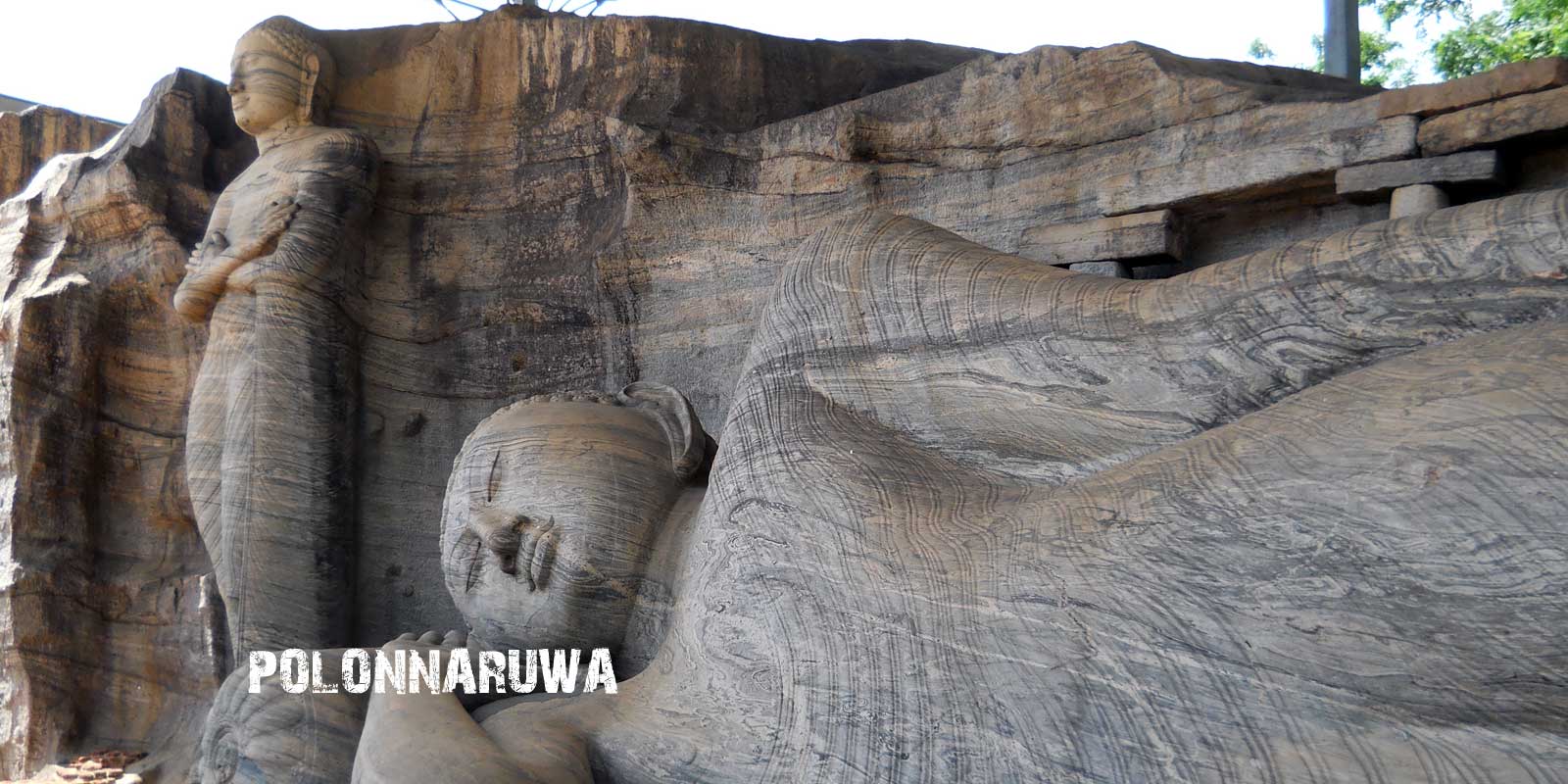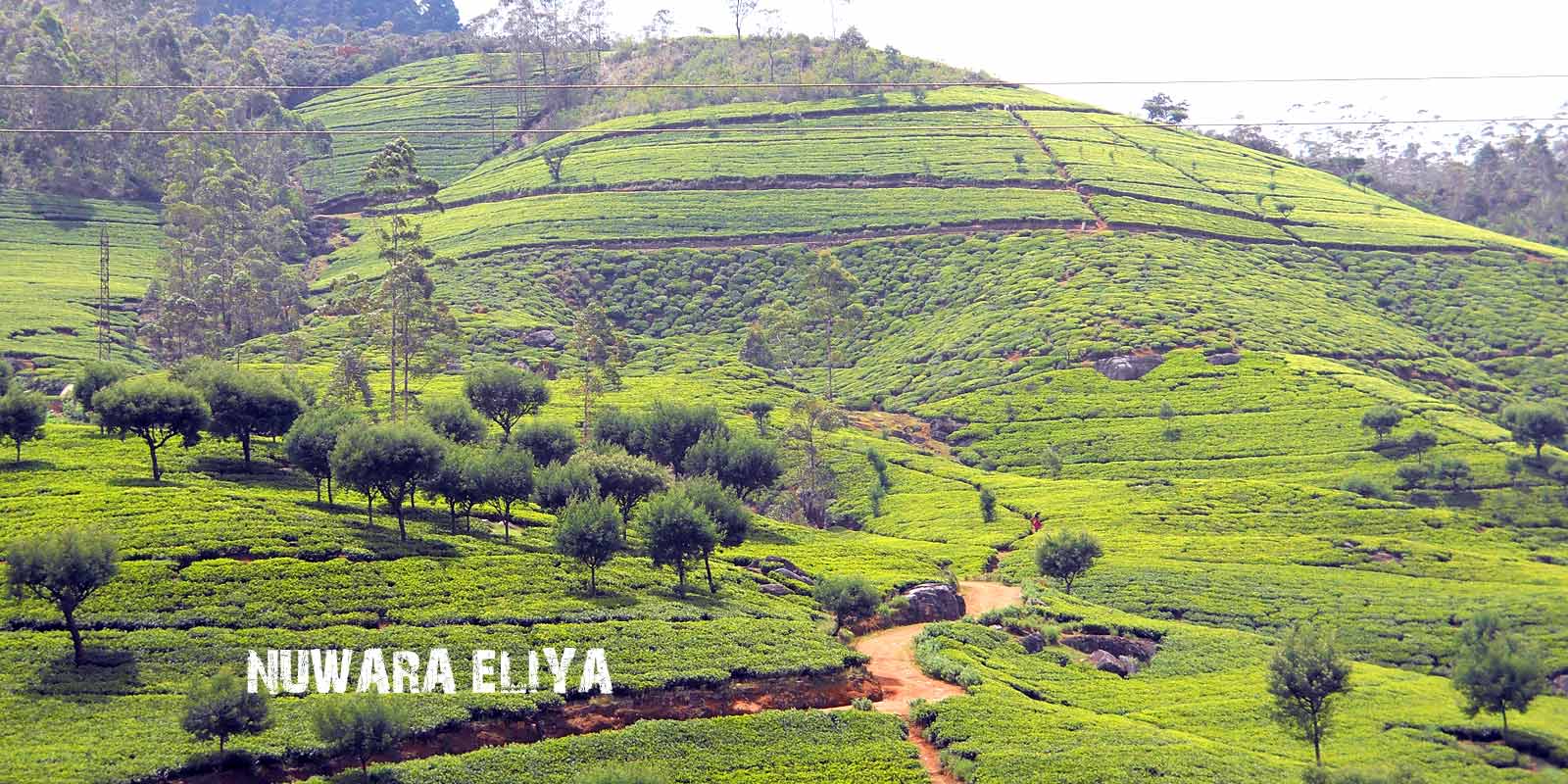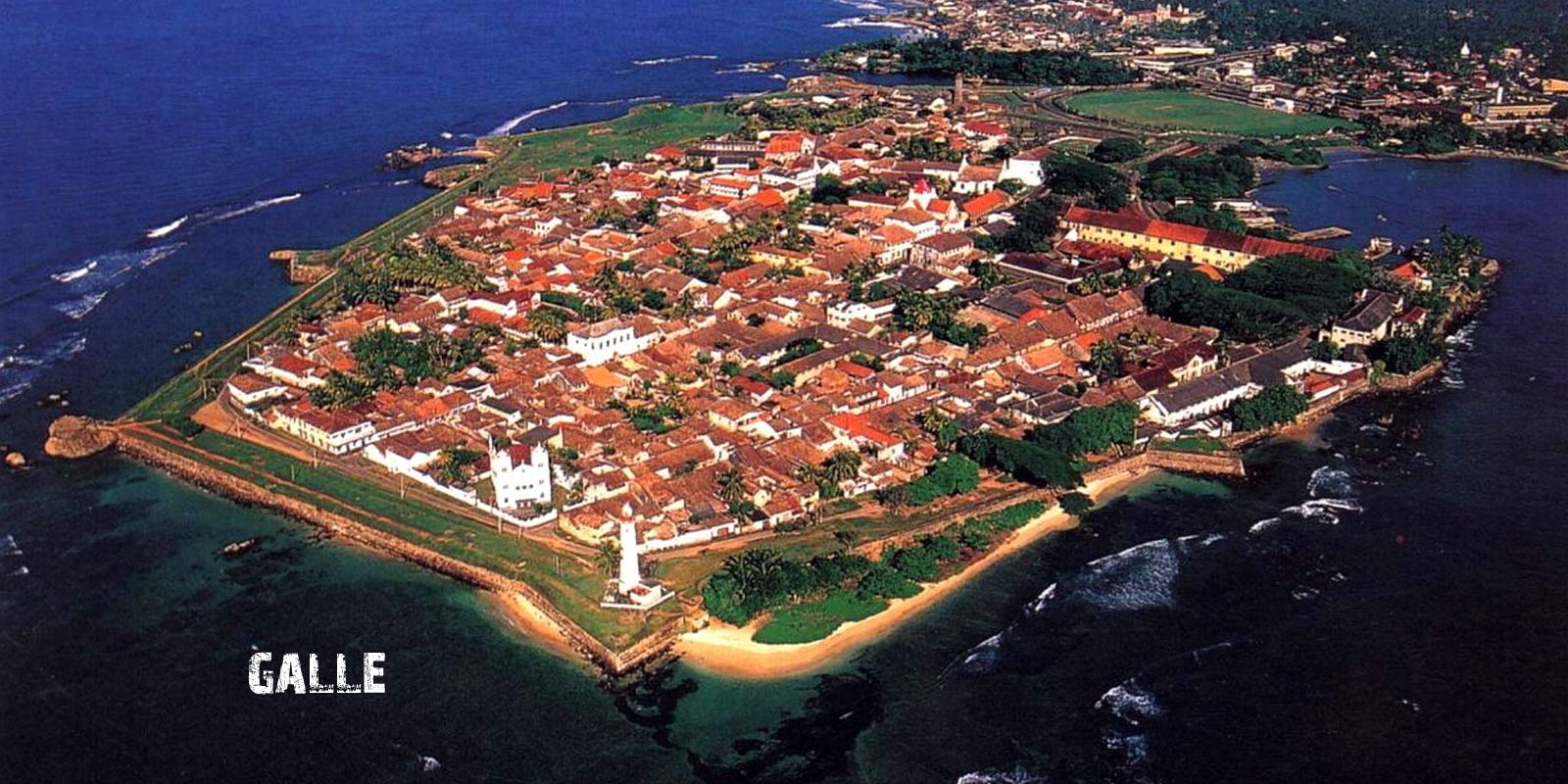
BEST 9 DAYS - COOL
• BEST - 9 Days COOL
Negombo, Anuradhapura, Polonnaruwa, Sigiriya, Kandy, Nuwara Eliya, Kitulgala, Bentota, Galle.
• NEGOMBO
Negombo is about 2 meters above sea level and Negombo's geography is a mix of land and water. The Dutch canal flows in the heart of the city of Negombo. The Negombo lagoon is one of the most scenic landmarks of Negombo. There are over 190 species of wildlife and plenty of birds in the mangroves of Negombo. The Northern border of the city is formed by the Ma Oya river which meets the Indian Ocean.
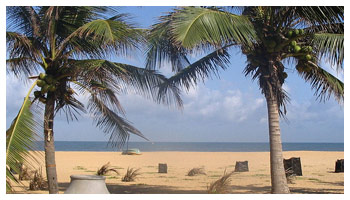
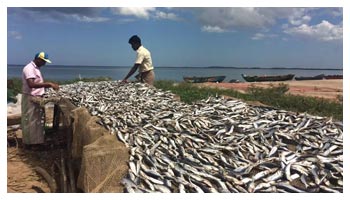
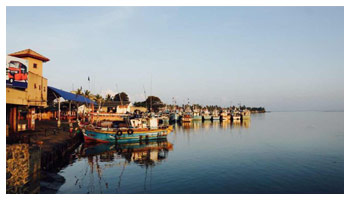
Just 7kms from the Bandaranaike International Airport, at the tip of the Negombo lagoon lies the busy Negombo beach. Lush coconut palms and mangroves run along the beach, while the age old catamarans, outrigger canoes, and the more modern trawlers gently bounce at sea. Negombo is a famous fishing village that is equally proud of its Dutch fort and other Dutch period architecture.
• ANURADHAPURA
The city, now a UNESCO World Heritage Site, was the center of Theravada Buddhism for many centuries. The city lies 205 km north of the current capital Colombo in Sri Lanka's North Central Province, on the banks of the historic Malvathu Oya. It is one of the oldest continuously inhabited cities in the world and one of the eight World Heritage Sites of Sri Lanka.
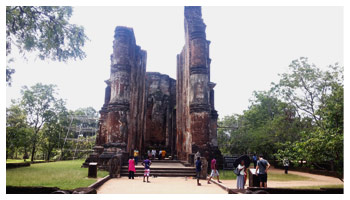
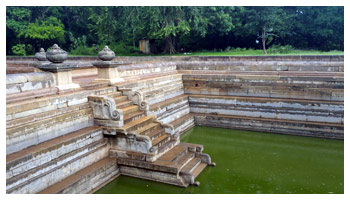
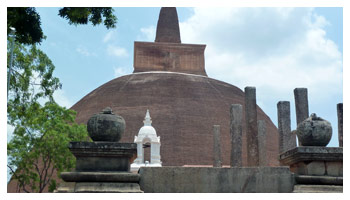
Founded around 5th Century BC, Anuradhapura is the oldest city in the Cultural Triangle and Sri Lanka’s first capital. In its heyday, tens of thousands of people lived in a city of royal palaces, monasteries, temples topped by glittering jewels, houses of two or three storeys, shops, pleasure gardens, bathing pools and wooded parks.
Today, the restored remains of ancient Anuradhapura are dotted amidst peaceful parks to the north and west of the modern city. Among the many bell-shaped dagobas or temples are Thuparama (which enshrines a relic of Lord Buddha), and Ruwanweli, rebuilt to its original 2nd century BC bubble shape. Other dagobas include the 1st century BC Abhayagiri and 3rd century BC Jetawana, both around 120 metres high and second in height only to Egypt’s mightiest pyramids at Giza. Excavations have unearthed jewellery, sculptures, coins and other rare artefacts including seven Buddhist scriptures etched into sheets of beaten gold. Soaring towards the sky, the magnificent dagobas reached monumental proportions during the period of the kingdom of Anuradhapura, which lasted for about 1,500 years, until the 10th century AD. Stone pillars are all that remains of the 1,000-room monks’ residence or Brazen Palace, near Sri Maha Bodhi or the sacred bo tree, a slender fig or ficus religiosa supported by iron crutches.
The oldest historically documented tree on earth, this grew from a sapling taken over 2,200 years ago from the very same tree under which Lord Buddha gained enlightenment. The finest of the carved stone figures protecting gateways (guard stones) at Anuradhapura is at the pavilion of Ratna Prasada. Nearby, at the Queen’s Pavilion, is a superbly crafted semi-circular stone moonstone set at the base of the stairs. The Isurumuniya Rock Temple is renowned for its ancient bas-relief sculptures, including those known as The Lovers, The Horseman and a group of elephants playing in water. No less than three vast irrigation lakes, which remain to this day, nourished the agriculture of ancient Anuradhapura, which offers numerous other fascinating sites.
• POLONNARUWA
Today the ancient city of Polonnaruwa remains one of the best planned archaeological relic sites in the country, standing testimony to the discipline and greatness of the Kingdom's first rulers. Its beauty was also used as a backdrop to filmed scenes for the Duran Duran music video Save a Prayer in 1982. The ancient city of Polonnaruwa has been declared a World Heritage site by UNESCO.
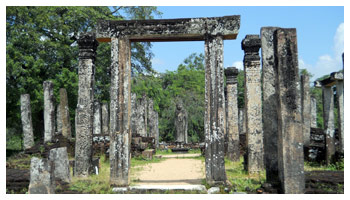
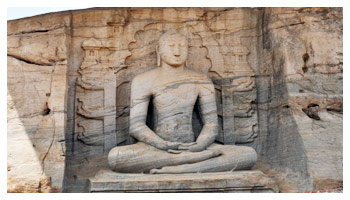
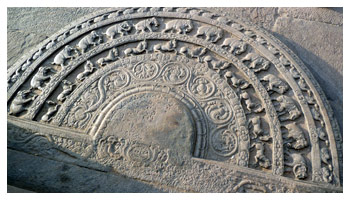
Ancient city Polonnaruwa was established as the capital after Anuradhapura had been invaded in the late 10th century. Under King Parakramabu, who ruled in the late 11th century, Polonnaruwa became a magnificent walled city. He built the vast reservoir, Parakrama Samudra (the Sea of Parakrama) still in use today, and ordered the construction of monasteries, temples, palaces, bathing pools and Buddhist statues, all set in a forested park surrounded by moats. The remains of Polonnaruwa are so numerous that only a few highlights can be mentioned. One of the most striking of the many sites is Polonnaruwa’s Gal Vihara or Rock Shrine.
• SIGIRIYA
Sigiriya consists of an ancient citadel built by King Kashyapa during the 5th century. The Sigiriya site contains the ruins of an upper palace located on the flat top of the rock, a mid-level terrace that includes the Lion Gate and the mirror wall with its frescoes, the lower palaces located behind the lavish lower gardens, and moats and ramparts which protected the citadel. The site was both a palace and a fortress. The upper palace on the top of the rock includes cisterns cut into the rock. The moats and walls that surround the lower palace are exquisitely beautiful.
Sigiriya today is a UNESCO listed World Heritage Site. It is one of the best preserved examples of ancient urban planning. It is the most visited historic site in Sri Lanka.
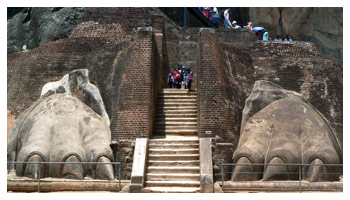
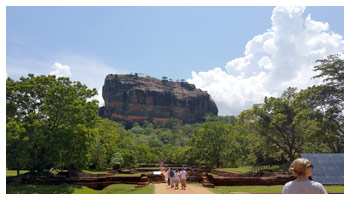
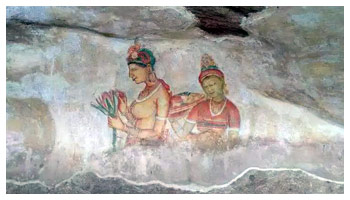
Sigiriya Rock Fortress and City built by an obsessed monarch in the 5th century, Sigiriya or Lion Rock is an astonishing feat of engineering and construction. The most striking portion of Sigiriya, a terracotta and grey core of rock set in the cultural heart of Sri Lanka, rises a sheer 200 meters above a forested plain, its flattened summit sloping gently. A series of moats, ramparts and water gardens — remnants of an ancient city — spread out on two sides of the rock, with the remains of a pair of giant stone lion’s paws still guarding the staircase that leads to the summit, once occupied by a royal palace.
Designated a World Heritage Site by UNESCO in 1982, Sigiriya is Asia’s best preserved city of the first millennium, showing complex urban planning around the base of the rock, combined with sophisticated engineering and irrigation skills in the palace perched on the summit. It is considered it to be one of the oldest tourist attractions in the world with visitors recording their impressions in some of the earliest-known graffiti.
• KANDY
Kandy (Sinhalese: Maha nuwara, pronounced [mahaˈnuʋərə]) is a major city in Sri Lanka, located in the Central Province, Sri Lanka. It is the second largest city in the country after Colombo. It was the last capital of the ancient kings' era of Sri Lanka. The city lies in the midst of hills in the Kandy plateau, which crosses an area of tropical plantations, mainly tea. Kandy is both an administrative and religious city and is also the capital of the Central Province. Kandy is the home of The Temple of the Tooth Relic (Sri Dalada Maligawa), one of the most sacred places of worship in the Buddhist world. It was declared a world heritage site by UNESCO in 1988.
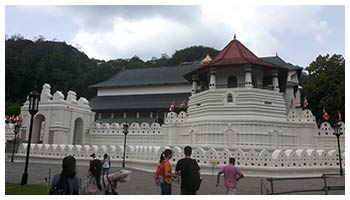
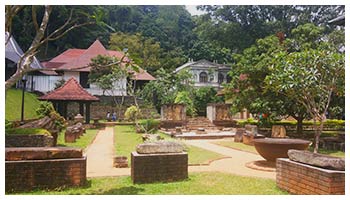
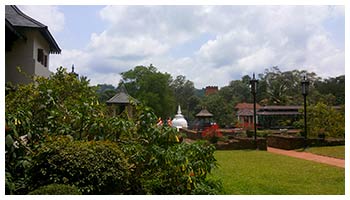
The sacred Temple of the Tooth in the historic city of Kandy houses one of Buddhism’s most sacred relics and draws followers of the Buddhist faith from all over the world. The Royal Complex situated around the Temple of the Tooth and Kandy Lake – comprising of the King’s Palace, the Queens Palace, the Audience Hall, the Royal Boathouse and the Royal Summer House, represent the zenith of ancient Sri Lankan architecture.
In the hills around Kandy, many temples feature the distinctive architecture, murals and carving of the late-medieval period. These include two 14th century temples: the beautiful hilltop Lankatilleke and Gadaladeniya, its wooden doors still bearing the original paintings.
• NUWARA ELIYA
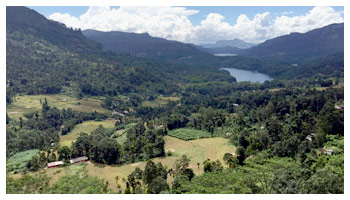
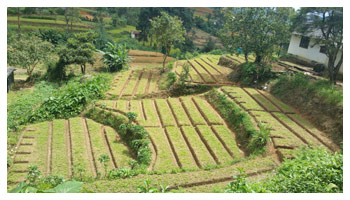
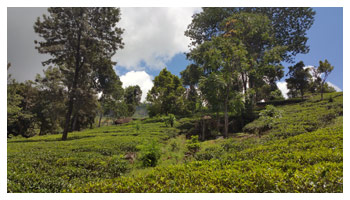
Nuwara Eliya (City of Lights) is a resort city in the Central Mountain Range of Sri Lanka. Blessed with salubrious climate, breathtaking views of valleys, meadows, mountains and greenery; it’s hard to imagine that Nuwara Eliya is only 180 Km from the hot and humid Colombo. Nuwara Eliya, also known as ‘Little’ England’, was the favorite hill station of the British who tried to create the resort into a typical English Village. The old brick Post office, country house like hill club, with its hunting pictures, mounted hunting trophies and fish, and it’s strict formal dinner attire; the 18 hole golf course, race course etc., evoke nostalgia of Colonial British Ceylon and Lake Gregory, Tea Plantation, Waterfalls and Hagala Botanical Gardens are few among other attractions around the hill topic.
• KITULGALA
Great Fun, Adventure, Excitement and the ideal Outdoor Experience- that can find all these elements in Rafting, Hiking, Trekking and Canyoning at "Kelani" River in Kithulgala and fall in love with the rapids, Water and Greenery that Nature has to offer you in this part of the Country and This is the typical fare of a white water rafting experience that is refreshingly Sri Lankan.
Minneriya National Park is a national park in North Central Province of Sri Lanka. The area was designated as a national park on 12 August 1997, having been originally declared as a wildlife sanctuary in 1938.[1] The reason for declaring the area as protected is to protect the catchment of Minneriya tank and the wildlife of the surrounding area. The tank is of historical importance, having been built by King Mahasen in third century AD. The park is a dry season feeding ground for the elephant population dwelling in forests of Matale, Polonnaruwa, and Trincomalee districts. The park earned revenue of Rs. 10.7 millions in the six months ending in August 2009.[2] Along with Kaudulla and Girithale, Minneriya forms one of the 70 Important Bird Areas (IBAs) of Sri Lanka.[3] The park is situated 182 kilometres (113 mi) from Colombo.

Great Fun, Adventure, Excitement and the ideal Outdoor Experience- that can find all these elements in Rafting, Hiking, Trekking and Canyoning at "Kelani" River in Kithulgala and fall in love with the rapids, Water and Greenery that Nature has to offer you in this part of the Country and This is the typical fare of a white water rafting experience that is refreshingly Sri Lankan.
• BENTOTA
Bentota and near by Beruwala are havens to tourists with accommodation to suit every budget, a range of Ayurveda treatments, and an array of water sports leaving the adventurer spoilt for choice! This tourist destination offers you water skiing on the rivers or estuaries, snorkelling, scuba diving, wind surfing, parasailing, fishing and a host of other activities to suit your mood.
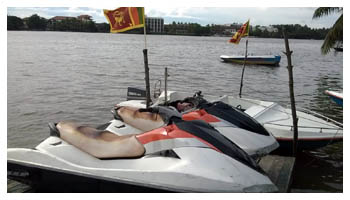
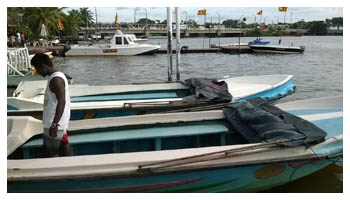
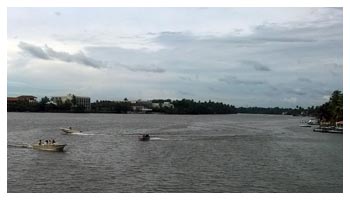
• GALLE
Galle is a major city in Sri Lanka, situated on the southwestern tip, 119 km from Colombo. Galle is the administrative capital of Southern Province, Sri Lanka and is the district capital of Galle District. Prominent landmarks in Galle include the city's natural harbor, the National Maritime Museum, St. Mary's Cathedral founded by Jesuit priests, one of the main Shiva temples on the island, and Amangalla the historic luxury hotel. On 26 December 2004 the city was devastated by the massive Tsunami caused by the 2004 Indian Ocean earthquake that occurred a thousand miles away, off the coast of Indonesia. Thousands were killed in the city alone. Galle is home to a cricket ground, the Galle International Stadium which is considered to be one of the most picturesque cricket grounds in the world
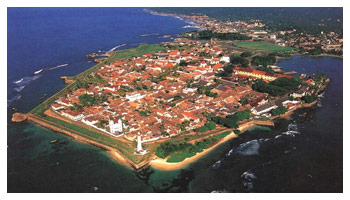
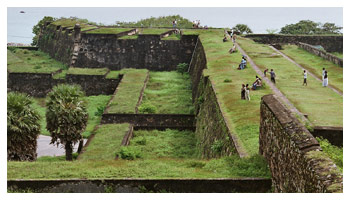
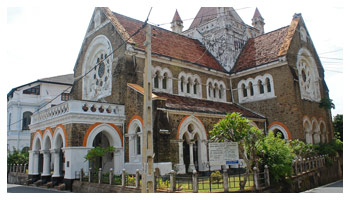
Dutch Fort at Galle, close to the island’s southernmost point, 173km from Colombo, has the distinction of being the best-preserved sea fort in South Asia. A living heritage site, this 90 hectare (222 acre) attraction is a superb blend of architecture, with fortifications that resemble those in the coastal areas of Portugal. The fall of Galle to the Dutch in 1640 saw its fortifications consolidated further along the lines of the fortified cities of Europe. The Dutch and the English colonial styles are evident in the deep verandahs of houses supported by timber or masonry pillars. Originally established by the Portuguese in the 16th Century, it reached its zenith under Dutch rule in the 18th Century, providing spacious housing, wide roads and all necessary facilities within its walls including an intricate sewage system that was ahead of its time. When it comes to fortified towns, nothing can compete with the Dutch Fort in Galle. This World Heritage Site on the south coast was the main port of call for ships sailing between the East and Europe.
